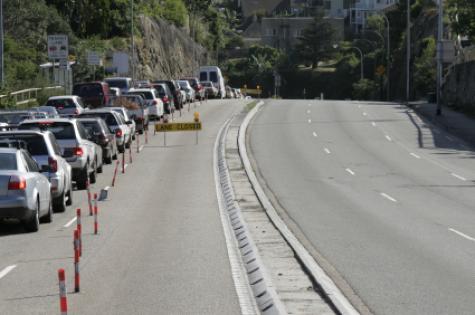Overshadowed by the White Paper on the Asian Century, the Federal Government released a discussion paper today which is aimed firmly at waistlines and urban angst - Active Travel.
The aim is to encourage people to get out of their cars and on to their feet, bicycles or public transport both to reduce traffic jams and to adopt a healthier lifestyle.
Infrastructure Minister, Anthony Albanese said urban congestion cost the country about $13 billion a year, and is expected to reach $20 billion annually by 2020, with 80 per cent of all commuting trips taken by car rather than alternative means. About half of all car trips are for less than five kilometres.
The discussion paper follows recent research from the Chiropractors' Association of Australia (CAA) who said that "workers could be risking their lives" because of the large amounts of time spent sitting while community to work each day. According to the CAA, the extensive commutes taken by some commuters can lead to spinal damage and increase the risk of chronic disease.
The Active Travel discussion paper proposes a host of suggestions for getting more people walking or cycling for short trips, as well as using more public transport for longer trips.
"If even a small percentage of short trips could be undertaken by a mode other than the private car, think what this could do for productivity," Mr Albanese said.
The discussion paper looks at what is happening overseas as well as early moves in Australian cities. It suggests how things could be improved through planning and building appropriate infrastructure - although it is silent on how to fund Australia's significant infrastructure deficits - and encouraging people to change their behaviour.
While CAA want more people to sit less - regardless of how they commute - the discussion paper is applauded by the National Heart Foundation.
The Heart Foundation's CEO, Dr Lyn Roberts, said that for the first time the Federal Government had embraced active travel in a strategic and integrated way.
"We know that people who engage in more active forms of transport, by either public transport, cycling or walking, are much more likely to get the recommended 30 minutes of physical activity a day, which has significant long term health benefits," Dr Roberts said in a statement.
In releasing its own research two weeks ago CAA spokesperson, Dr Billy Chow, highlighted the need for people who spend time in the car, bus, train or tram commuting to work to try to find other ways to incorporate physical activity into their day.
Further information:
Check out the discussion paper at www.infrastructure.gov.au. Written submissions are invited, or a 6 question survey can be completed online closing 31 January 2013.
















__small.png)










